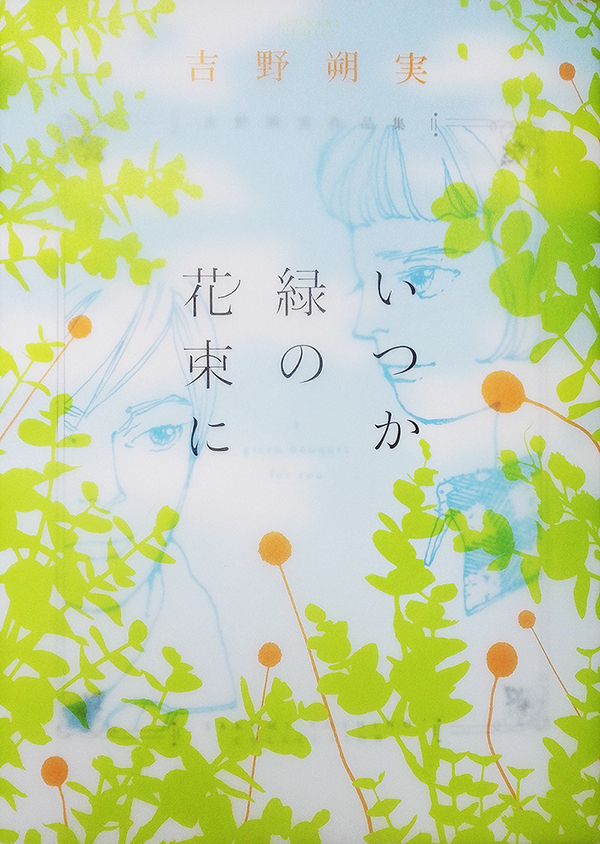 Today marks the first anniversary of mangaka Yoshino Sakumi’s death on April 20, 2016. The sad news came as a tremendous shock to many of us as it was so sudden and unexpected. Yoshino Sakumi, born in 1959, debuted in 1980 in Shueisha’s now folded Bouquet magazine and made a name for herself with works featuring memorably quirky characters, often twins, just as often going through a serious identity crisis, and exploring the depths of the human mind and soul. ShÅnen wa kÅya wo mezasu (1985-1987), Juliette no tamago (1988-1989) or the long-running period, published in Shogakukan’s defunct seinen magazine IKKI from 2004 to 2014, are among her most beloved and well-known works. Yoshino was also a respected film and literary critic and essayist.
Today marks the first anniversary of mangaka Yoshino Sakumi’s death on April 20, 2016. The sad news came as a tremendous shock to many of us as it was so sudden and unexpected. Yoshino Sakumi, born in 1959, debuted in 1980 in Shueisha’s now folded Bouquet magazine and made a name for herself with works featuring memorably quirky characters, often twins, just as often going through a serious identity crisis, and exploring the depths of the human mind and soul. ShÅnen wa kÅya wo mezasu (1985-1987), Juliette no tamago (1988-1989) or the long-running period, published in Shogakukan’s defunct seinen magazine IKKI from 2004 to 2014, are among her most beloved and well-known works. Yoshino was also a respected film and literary critic and essayist.
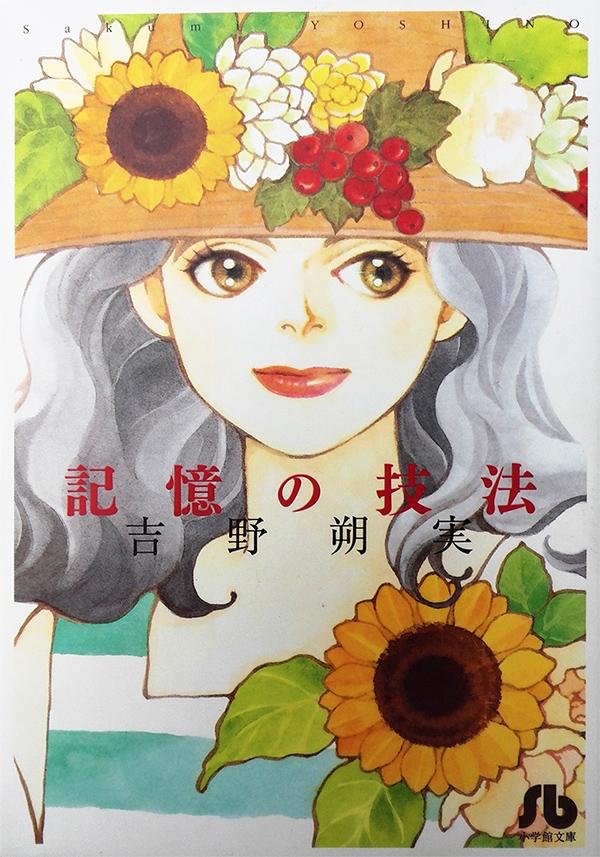 The works of her late period are closely linked with Shogakukan’s Gekkan flowers magazine. One of her strongest manga, the psychological thriller and human drama Kioku no gihÅ (highly recommended if you want to buy one single bunko volume to sample the authors work, be prepared for some emotional shocks though!), was published in the very first issue of the magazine in 2002 and a colour illustration for it was used on the cover. Through the first and second decade of the new millenium, she kept coming back to the magazine for more one-shots and visually intriguing two-tone comics.
The works of her late period are closely linked with Shogakukan’s Gekkan flowers magazine. One of her strongest manga, the psychological thriller and human drama Kioku no gihÅ (highly recommended if you want to buy one single bunko volume to sample the authors work, be prepared for some emotional shocks though!), was published in the very first issue of the magazine in 2002 and a colour illustration for it was used on the cover. Through the first and second decade of the new millenium, she kept coming back to the magazine for more one-shots and visually intriguing two-tone comics.
These last works, previously unpublished in comic book form, were lovingly compiled by the editors at flowers and turned into a beautifully designed single volume called Itsuka midori no hanataba (A Green Bouquet For You). The large A5 format book comes with a transparent dust jacket printed with flowers and contains several short and super short stories showcasing the range of this extremely talented author who had to leave this earth much too soon.
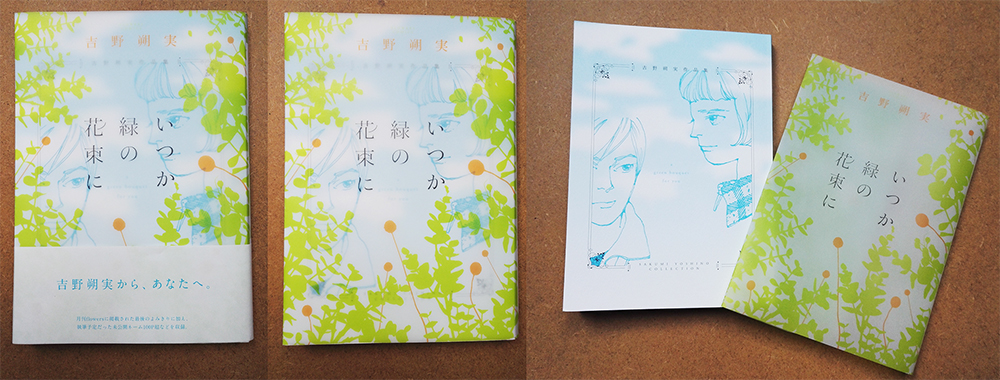
The title story is a romantic and touching ghost story while in the others included, readers will chance upon a dream dragon, a watermelon bringing possible death by doppelgänger, a princess with a bat as her earring, a green cat reminding a young woman of her guilty conscience, a woman obsessed with her fortune teller and an undertaker being the only one left after the powerhungry kings of the world have killed each other. Like many of Yoshino’s works, these stories depict the nature of us humans with a sharp sense for our dark side, but also with gentleness, poignancy and tongue-in-cheek humour.
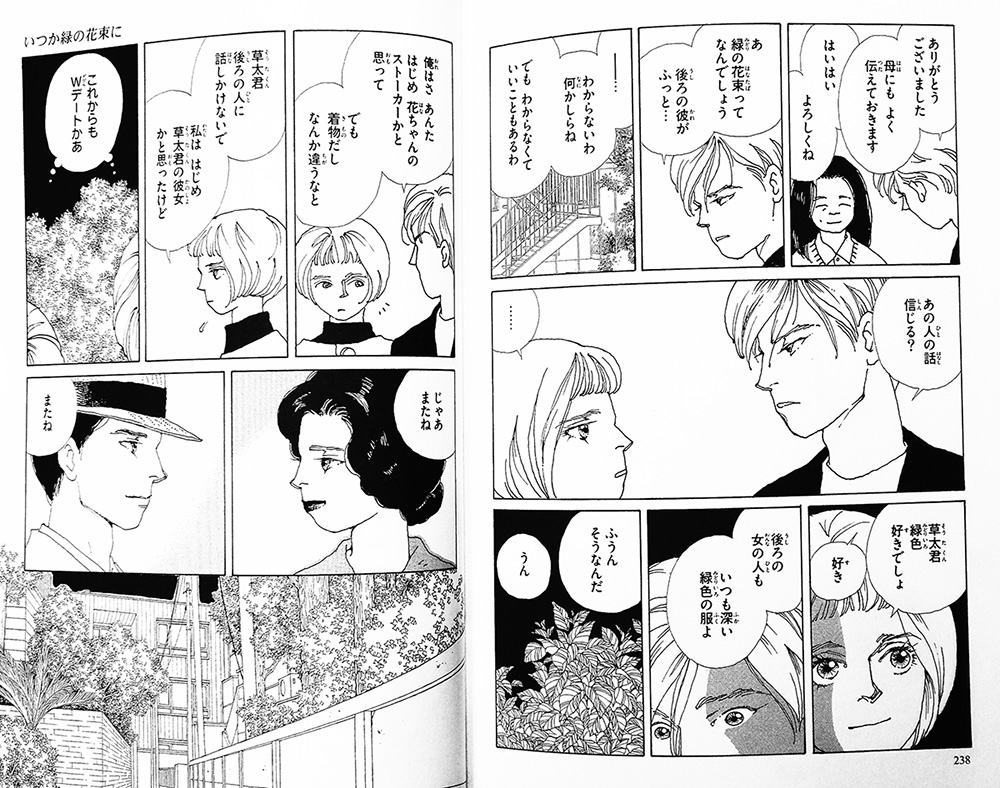
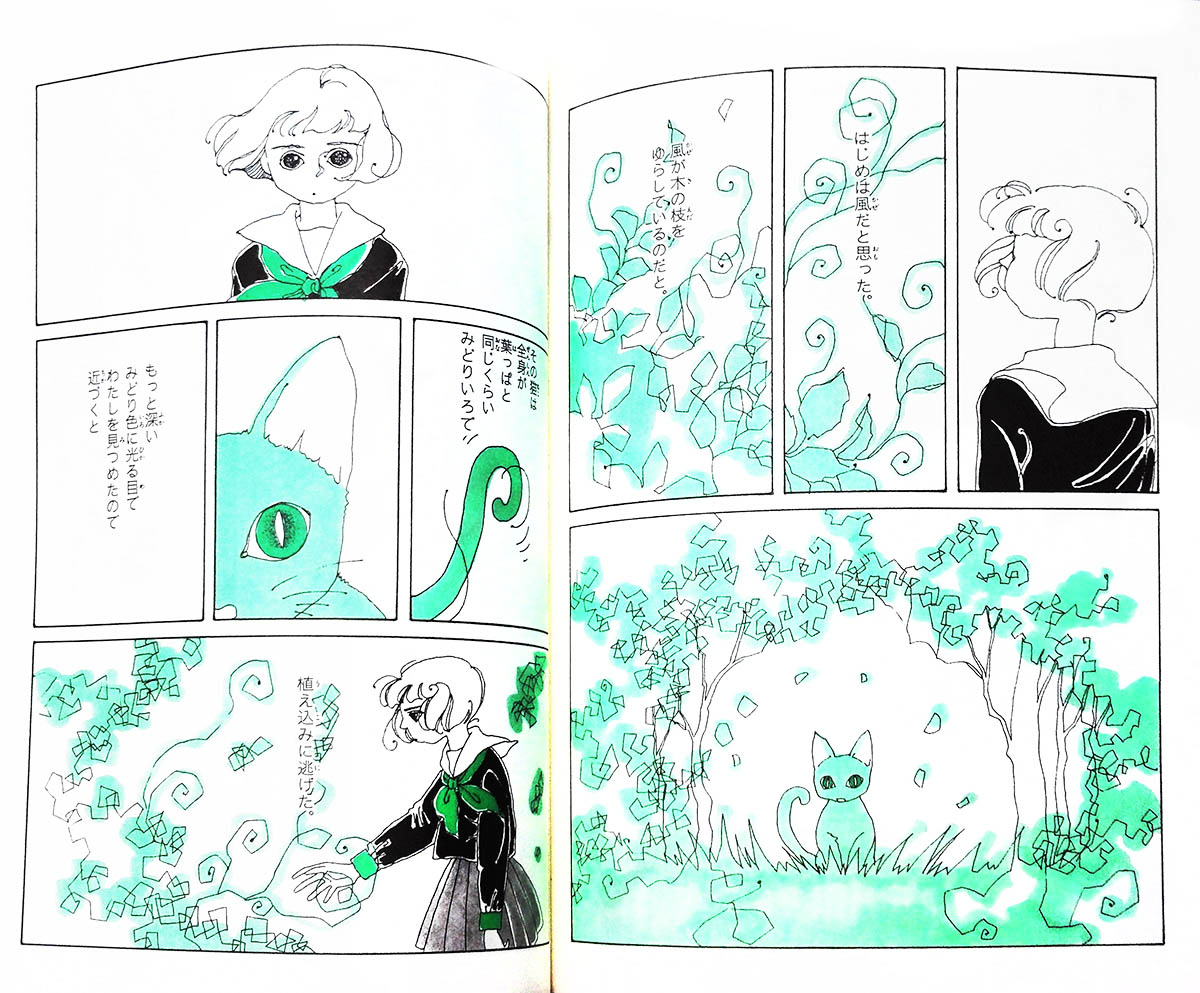
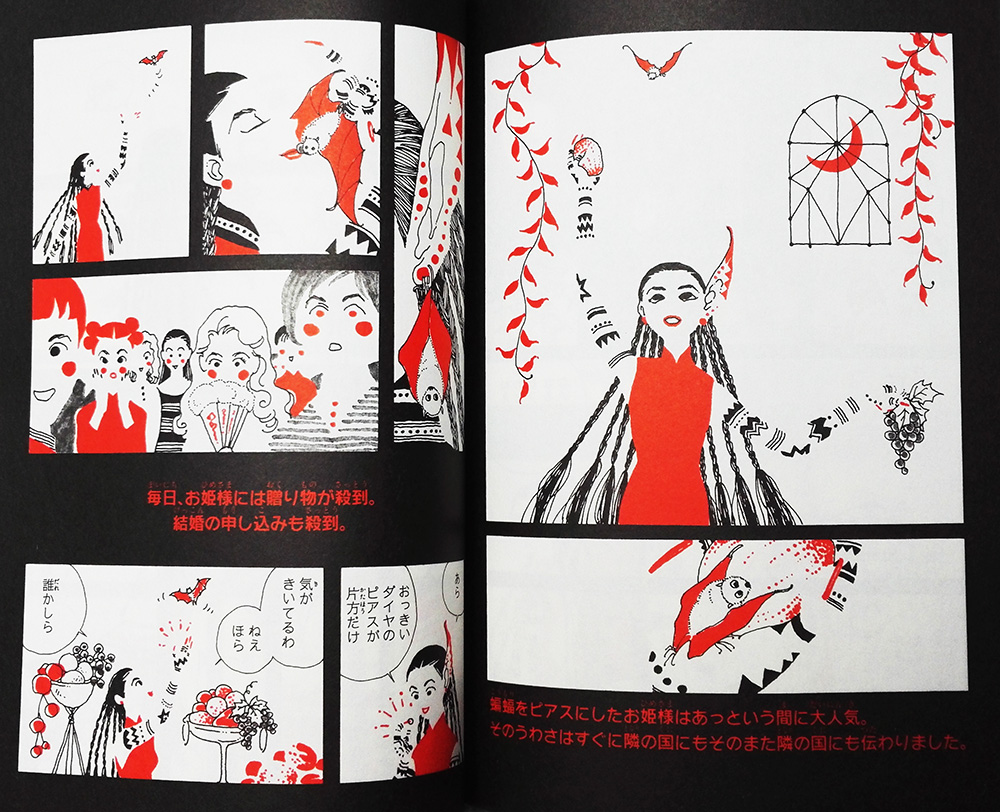
The largest part of the book is reserved for her second-to-last published short story, MOTHER, which was supposed to be continued soon in flowers until death ended this fantastic artist’s career. The unfinished 100-page rough script (called nÄ“mu/name in Japanese) composed of dialogues and pencil-drawn sketches for the manga layout is also included in the book. It’s surprisingly readable and, as a look behind the scenes, interesting from a manga fan’s point of view, the story itself being a post-apocalyptic sci-fi vision of the future, in tone and subject very similar to some of Hagio Moto‘s works.
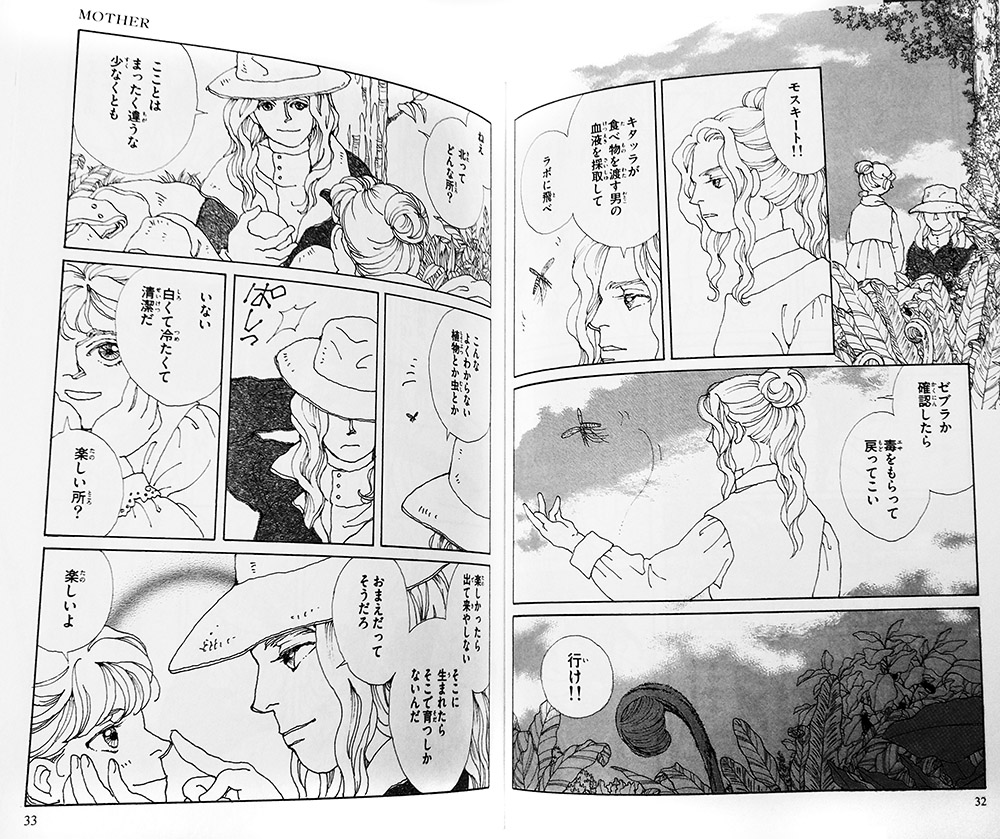
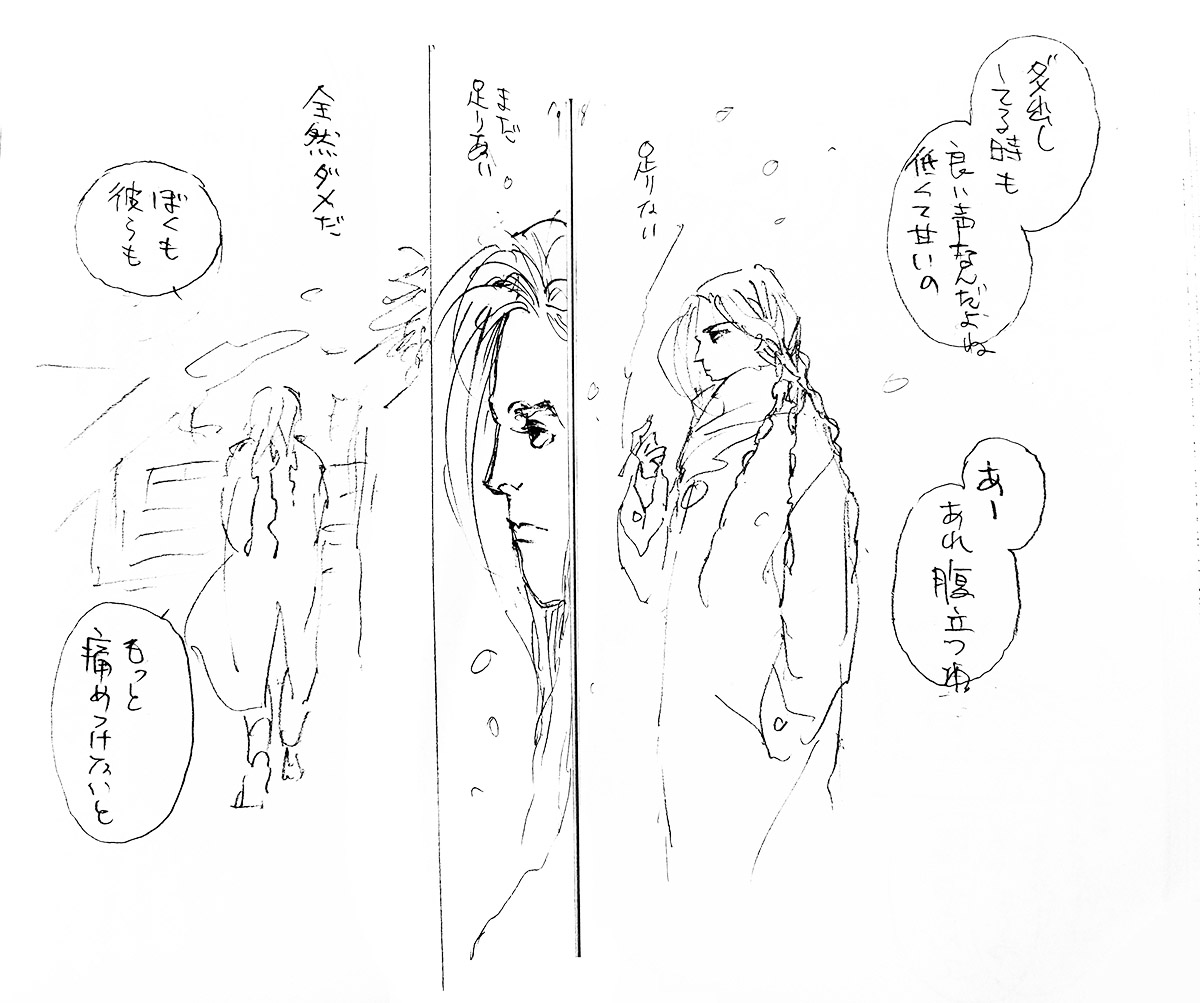
As much as I miss Yoshino-sensei and would have loved to see her work on something longer again after finishing period, this wonderful book provides something like closure, as chlichéd as it might sound. She’ll always be in the top ten of my favourite mangaka and I hope her unique, sometimes shocking, always moving works will continue to fascinate readers for many years to come!
Title: Yoshino Sakumi SakuhinshÅ« – Itsuka midori no hanataba (å‰é‡Žæœ”実作å“集 ã„ã¤ã‹ç·‘ã®èŠ±æŸã«)
Author: Yoshino Sakumi (å‰é‡Žæœ”実)
ISBN: 9784091670748
Publisher: Shogakukan
Format: A5, 248 pages
Year: 2016
Additional information: Last collection of short stories, published in December 2016 after the artist’s death on April 20, 2016. Contains works previously published in Gekkan flowers from 2004 to 2016: MOTHER and the unpublished follow-up in raw script form (name), the title story plus 3 other very short one-shots and 4 two-tone one-shots (black & red, black & green), plus a gallery of colour artworks, author comments and an interview recorded shortly before her death. More info at Shogakukan Comic.

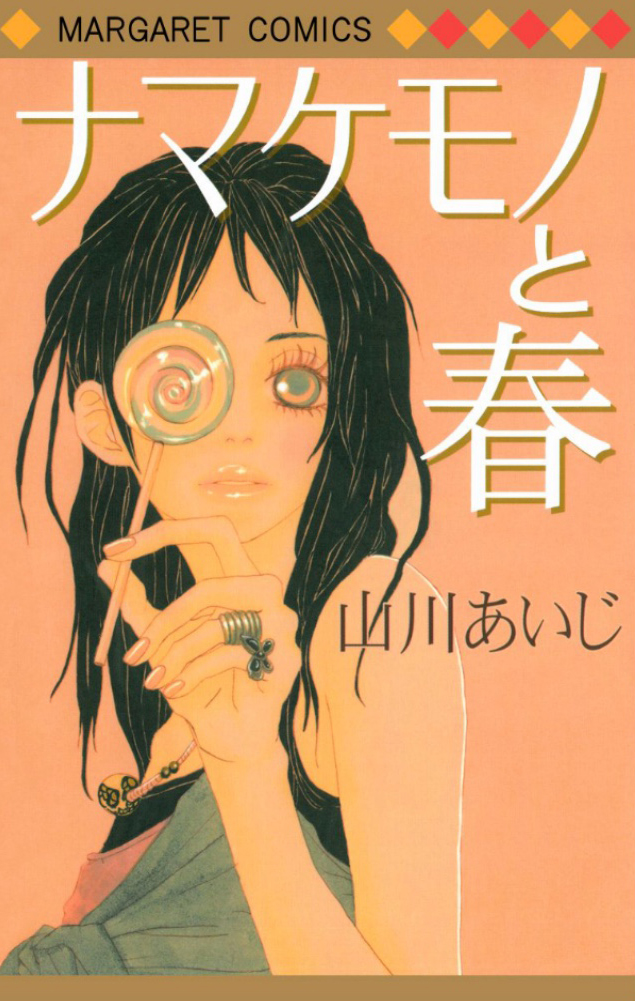 Around the beginning of the current millenium, a number of young manga artists debuted through Shueisha’s monthly shÅjo manga magazine Bessatsu Margaret (Betsuma) and its now defunct bimonthly sister magazine Deluxe Margaret (Derama), immediately grabbing their readers’ attention with eye-catching illustrations that relied heavily on cute details and ornaments, bright and often bold color combinations and intricate fashion designs. Their stories’ heroines were school girls whose lives and thoughts orbitted around school, friendship and, just as importantly, boys which isn’t all that surprising considering the target readership and the tradition of their ‘mothership’ magazine. But these girls went about their daily routines in style. They tried to find freedom in their restricted day to day life inside their own microcosm of female friends and boys while mirroring contemporary fashion trends with their pop punk or gyaru-style clothes. And just as prominent were their big eyes originally reserved for characters from Ribon, Betsuma‘s younger sister magazine mostly read by elementary school girls. It is definitely not wrong to assume that these young artists were heavily influenced by one of the most popular mangaka published through Ribon in the early 1990s, Yazawa Ai and her fashionable yet assertive girls.
Around the beginning of the current millenium, a number of young manga artists debuted through Shueisha’s monthly shÅjo manga magazine Bessatsu Margaret (Betsuma) and its now defunct bimonthly sister magazine Deluxe Margaret (Derama), immediately grabbing their readers’ attention with eye-catching illustrations that relied heavily on cute details and ornaments, bright and often bold color combinations and intricate fashion designs. Their stories’ heroines were school girls whose lives and thoughts orbitted around school, friendship and, just as importantly, boys which isn’t all that surprising considering the target readership and the tradition of their ‘mothership’ magazine. But these girls went about their daily routines in style. They tried to find freedom in their restricted day to day life inside their own microcosm of female friends and boys while mirroring contemporary fashion trends with their pop punk or gyaru-style clothes. And just as prominent were their big eyes originally reserved for characters from Ribon, Betsuma‘s younger sister magazine mostly read by elementary school girls. It is definitely not wrong to assume that these young artists were heavily influenced by one of the most popular mangaka published through Ribon in the early 1990s, Yazawa Ai and her fashionable yet assertive girls.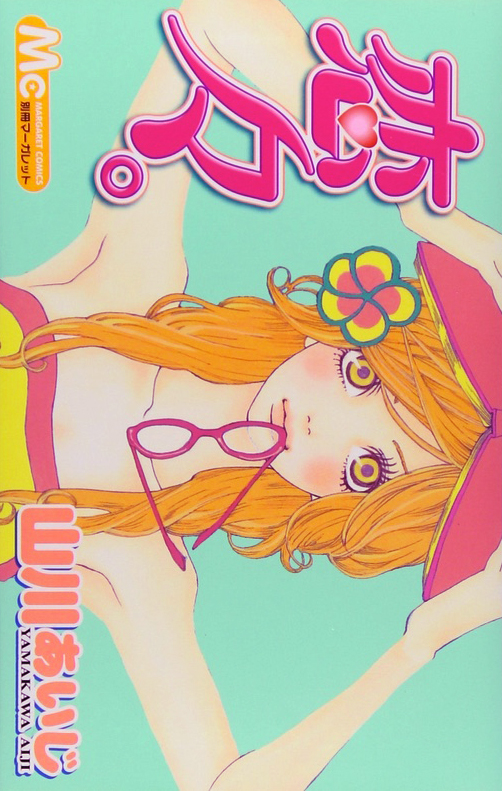 Yamakawa Aiji (å±±å·ã‚ã„ã˜) started her career like most shÅjo mangaka with a string of short stories and shorter series published in Betsuma and Derama with a steady output of one annual volume of collected short stories from 2002 to 2006. What kept readers coming back for more were her beautiful color artworks, her stories and heroines that emanated youth and freshness, boldness but also vulnerability and uncertainty. Then the string of new works was somehow broken and while I kept waiting for her name to appear in Betsuma again there was nothing, nothing but silence.
Yamakawa Aiji (å±±å·ã‚ã„ã˜) started her career like most shÅjo mangaka with a string of short stories and shorter series published in Betsuma and Derama with a steady output of one annual volume of collected short stories from 2002 to 2006. What kept readers coming back for more were her beautiful color artworks, her stories and heroines that emanated youth and freshness, boldness but also vulnerability and uncertainty. Then the string of new works was somehow broken and while I kept waiting for her name to appear in Betsuma again there was nothing, nothing but silence.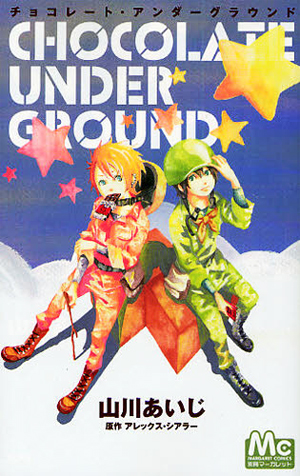 The next time I spotted her name in Betsuma again, I did a double take: in 2008, she published a mini-series called Chocolate Underground, an adaptation of an Alan Shearer novel for children called Bootleg about an underground youth resistance movement formed after chocolate had been banned by the government. The story was more shÅnen material than anything but what was even more surprising was Yamakawa’s refined new character design and artistic style. Gone were the overly huge eyes, the girly designs of the color illustrations, the focus on school uniforms brought to life with the latest fashion items and accessories!
The next time I spotted her name in Betsuma again, I did a double take: in 2008, she published a mini-series called Chocolate Underground, an adaptation of an Alan Shearer novel for children called Bootleg about an underground youth resistance movement formed after chocolate had been banned by the government. The story was more shÅnen material than anything but what was even more surprising was Yamakawa’s refined new character design and artistic style. Gone were the overly huge eyes, the girly designs of the color illustrations, the focus on school uniforms brought to life with the latest fashion items and accessories!

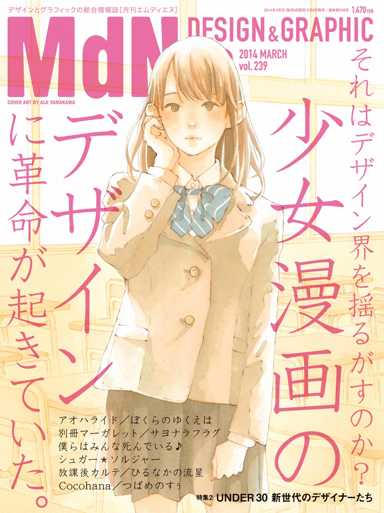 In early 2014, the design magazine MdN devoted one of their issues to the “shÅjo manga design revolution” brought about by the fact that the big publishing companies gradually stopped using uniform cover designs for each of their comic labels. Graphic design companies are now hired to collaborate with the mangaka for the comic book covers and a serie’s “graphic identity.” The cover of MdN featured an illustration by none other than Yamakawa Aiji who represented more than anyone else the new freedom found in the art and design of mainstream shÅjo manga.
In early 2014, the design magazine MdN devoted one of their issues to the “shÅjo manga design revolution” brought about by the fact that the big publishing companies gradually stopped using uniform cover designs for each of their comic labels. Graphic design companies are now hired to collaborate with the mangaka for the comic book covers and a serie’s “graphic identity.” The cover of MdN featured an illustration by none other than Yamakawa Aiji who represented more than anyone else the new freedom found in the art and design of mainstream shÅjo manga.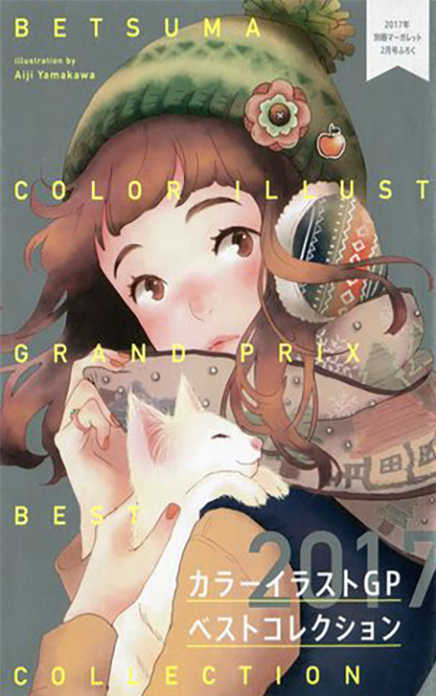 One can only speculate about the reasons for her disappearance as a mangaka. A possible explanation could be the huge stress put upon the shoulders of manga artists who have to meet magazine deadlines for the latest chapter of their works. Stand Up! wasn’t even running regularly in The Margaret which comes out every 2 months and it was Yamakawa’s only running series so her workload must have been relatively low compared to that of other, busier artists. But then there’s also the need to conform to the genre conventions of the magazine your work is running in which you are more or less gently reminded of by your editor who knows what readers want and expect from your work through the “enquette” postcards sent in. Add a little bit of pressure and doubts you give yourself as an artist and storyteller, the financial insecurities of a freelance artist, the toll that the pressure and committment to your work can take on your own health but also your social relationships… Reasons to stop working as a professional mangaka exist in abundance but I hope Yamakawa Aiji makes it through somehow!
One can only speculate about the reasons for her disappearance as a mangaka. A possible explanation could be the huge stress put upon the shoulders of manga artists who have to meet magazine deadlines for the latest chapter of their works. Stand Up! wasn’t even running regularly in The Margaret which comes out every 2 months and it was Yamakawa’s only running series so her workload must have been relatively low compared to that of other, busier artists. But then there’s also the need to conform to the genre conventions of the magazine your work is running in which you are more or less gently reminded of by your editor who knows what readers want and expect from your work through the “enquette” postcards sent in. Add a little bit of pressure and doubts you give yourself as an artist and storyteller, the financial insecurities of a freelance artist, the toll that the pressure and committment to your work can take on your own health but also your social relationships… Reasons to stop working as a professional mangaka exist in abundance but I hope Yamakawa Aiji makes it through somehow!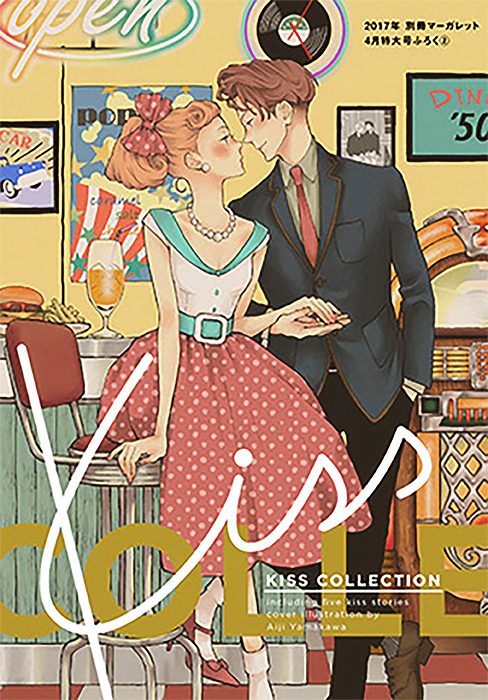 Yamakawa has been publishing a bit of idol-related work as a doujinshi author under a different pen name but apart from that, it’s become relatively quiet as far as a continuation of Stand Up! or a new story are concerned, unfortunately. There is light at the end of the tunnel, though! Yamakawa Aiji contributed the cover artwork for the furoku manga volume which came with Betsuma 2/2017 (released January 13; see the cover above). And she did another (super cute!!) cover illustration for the furoku manga volume titled Kiss Collection coming with Betsuma 4/2017 (released a few days ago, on March 13; see right for the cover). For now one can only hope that Yamakawa Aiji makes a full recovery and resurfaces in the professionally published manga world very soon because her unique style and engaging stories from her very memorable characters’ points of view are such a vital contribution to the world of shÅjo manga!
Yamakawa has been publishing a bit of idol-related work as a doujinshi author under a different pen name but apart from that, it’s become relatively quiet as far as a continuation of Stand Up! or a new story are concerned, unfortunately. There is light at the end of the tunnel, though! Yamakawa Aiji contributed the cover artwork for the furoku manga volume which came with Betsuma 2/2017 (released January 13; see the cover above). And she did another (super cute!!) cover illustration for the furoku manga volume titled Kiss Collection coming with Betsuma 4/2017 (released a few days ago, on March 13; see right for the cover). For now one can only hope that Yamakawa Aiji makes a full recovery and resurfaces in the professionally published manga world very soon because her unique style and engaging stories from her very memorable characters’ points of view are such a vital contribution to the world of shÅjo manga!